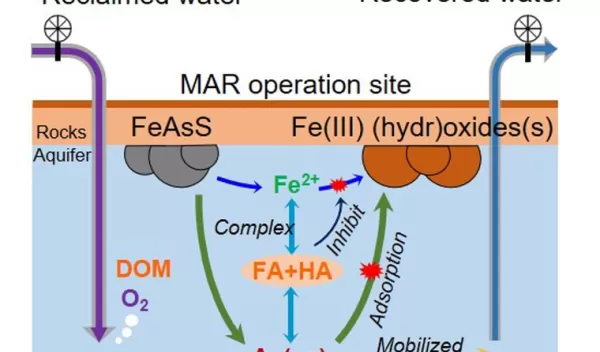
Toward a smarter way of recharging an aquifer
To replenish groundwater, many municipalities inject reclaimed water into depleted aquifers. The injected water has been purified by secondary wastewater treatment, and, in some cases, has been treated through tertiary processes and can be clean enough to drink. Unfortunately, over time, the reclaimed water sometimes becomes contaminated.
An NSF-funded research team at Washington University in St. Louis, led by Young-Shin Jun and Xuanhao Wu, has determined how potable water used to recharge an aquifer can become contaminated with dangerous levels of arsenic.
The research was published in Environmental Science and Technology.
In a managed aquifer recharge, "we continuously draw down the aquifer, but we never refill it enough," Jun said. "Our population can grow quickly and our lifestyle becomes more water-dependent, but the natural refilling process is slow," she said. Water management practice has engineered a way to inject water to compensate for that consumption and achieve environmental sustainability, the scientists say.
But "we have to take into account the dissolved organic matter in injected water to make sure it does not trigger mobilization of toxins," Jun said. "Their role in managed aquifer recharge should be included in models. Knowing how water chemistry alters the chemical reactions in an aquifer will enable us to fully use the water, rather than discarding it as waste."
Added Enriqueta Barrera, a program director in NSF's Division of Earth Sciences, "The conservation and management of water resources benefit from a geochemical understanding of arsenic stability and mobilization in groundwater systems. This study provides valuable analyses and insights for managed aquifer recharge in localities with arsenic-bearing minerals."
